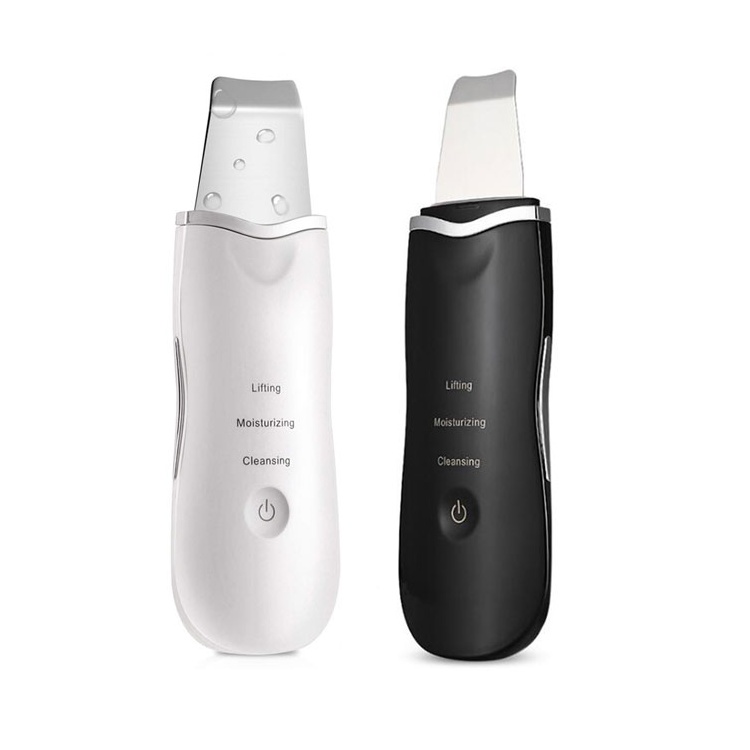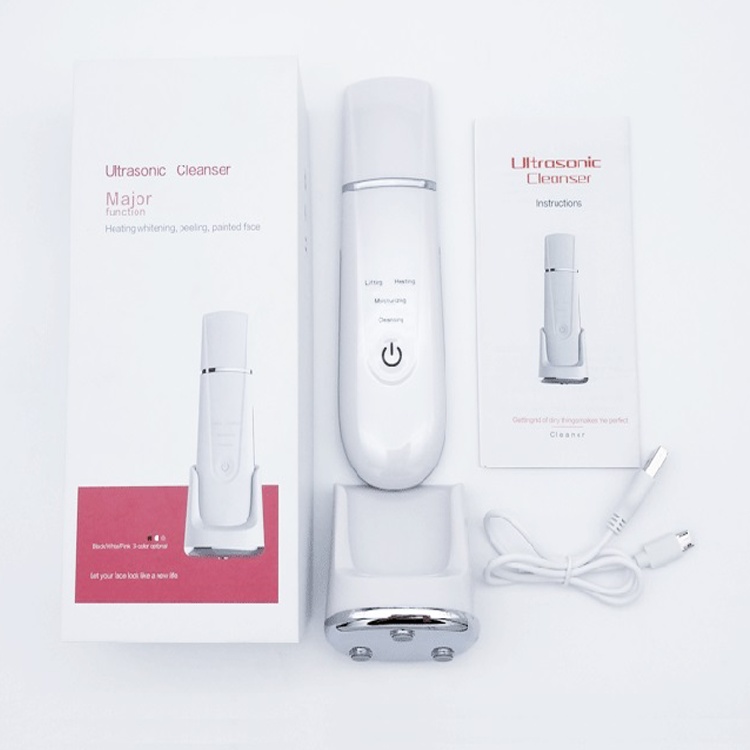Are skin scrubbers good for your skin?
Summary
Skin scrubbers, particularly ultrasonic skin scrubbers, have emerged as popular tools in skincare routines, praised for their ability to deeply cleanse and exfoliate the skin. These devices utilize high-frequency sound waves to dislodge impurities, dead skin cells, and excess oil, making them suitable for various skin types, including sensitive skin.
The rising interest in these tools reflects a broader trend towards non-invasive skincare solutions that promise to enhance skin health and appearance without the irritation associated with traditional exfoliation methods.
Notable benefits of ultrasonic skin scrubbers include improved product absorption, stimulation of collagen production, and a gentle exfoliation process that reduces the risk of irritation or damage to the skin barrier.
Many users report enhanced skin texture and a reduction in breakouts, making these devices appealing for those struggling with acne or dullness.
Additionally, the non-abrasive nature of ultrasonic scrubbing aligns with dermatological recommendations for maintaining skin health, particularly for individuals with sensitivities.
Despite their advantages, skin scrubbers are not without controversy. Concerns have been raised regarding the potential for over-exfoliation, skin irritation, and allergic reactions, especially among users with sensitive skin or specific ingredient sensitivities.
Dermatologists recommend cautious usage—typically one to two times a week—to prevent adverse effects, and proper post-treatment care is essential for maintaining skin integrity.
As with any skincare tool, individual experiences may vary, leading to mixed reviews regarding effectiveness and reliability.
In summary, while skin scrubbers present a promising addition to modern skincare regimens, they require informed usage and attention to individual skin needs to fully realize their benefits and mitigate potential risks.
Types of Skin Scrubbers
Skin scrubbers, also known as ultrasonic skin scrubbers or facial scrubbers, are popular tools in skincare routines. They utilize various technologies to exfoliate the skin, improve product absorption, and enhance the overall appearance of the skin.
Other Types of Skin Scrubbers
Manual Exfoliating Tools
These include brushes, sponges, and cloths designed for physical exfoliation. While effective for many skin types, they may be too harsh for sensitive skin and can potentially cause micro-tears in the skin if used improperly.
Chemical Exfoliating Devices
These tools use chemical exfoliants such as Alpha Hydroxy Acids (AHAs) and Beta Hydroxy Acids (BHAs) to dissolve dead skin cells. They are effective for improving skin texture and treating conditions like acne but require careful usage to avoid irritation.
Benefits of Using Skin Scrubbers
Skin scrubbers, particularly ultrasonic skin scrubbers, have gained popularity in skincare routines due to their effectiveness in deep cleansing and exfoliation. These devices utilize ultrasonic waves to gently dislodge impurities and dead skin cells from the surface of the skin, providing several key benefits.
Deep Cleansing and Exfoliation
Ultrasonic skin scrubbers excel at deep cleansing by breaking down and lifting out impurities that can clog pores. This process not only helps remove excess oil and dirt but also effectively exfoliates the skin, giving it a fresh and rejuvenated appearance. Regular use can lead to improved skin texture and tone, as the gentle exfoliation helps brighten the skin and even out discoloration.
Enhanced Product Absorption
One of the significant advantages of using a skin scrubber is its ability to enhance the absorption of skincare products. By removing the outer layer of dead skin cells, these devices prepare the skin to better absorb serums, moisturizers, and other active ingredients. This increased penetration can enhance the effectiveness of topical treatments, allowing for improved results in addressing various skin concerns.
Stimulation of Collagen Production
The mechanical vibrations generated by ultrasonic skin scrubbers also play a crucial role in stimulating collagen and elastin production in the skin. This stimulation is beneficial for maintaining skin elasticity and firmness, potentially reducing the appearance of fine lines and wrinkles over time.
Non-Abrasive and Gentle
Unlike traditional scrubbing methods that may be harsh and abrasive, ultrasonic skin scrubbers provide a non-invasive, gentle exfoliation without downtime. This makes them suitable for various skin types, including sensitive skin, as they minimize the risk of irritation and inflammation associated with over-scrubbing.
Overall Skin Health Improvement
In addition to cleansing and exfoliation, regular use of skin scrubbers can help improve the overall condition of the skin, reducing the likelihood of breakouts and promoting a more radiant complexion. They can also assist in managing acne-prone skin by controlling excess oil production. Overall, incorporating skin scrubbers into a skincare routine can significantly contribute to healthier, clearer skin.
Potential Risks and Considerations
While skin scrubbers and exfoliation can offer numerous benefits, there are potential risks and considerations that users should be aware of to avoid adverse effects.
Skin Irritation and Sensitivity
Aggressive exfoliation or the use of harsh ingredients can lead to significant skin irritation and sensitivity. Common reactions include redness, inflammation, and increased susceptibility to breakouts, particularly for those with sensitive or acne-prone skin. Signs of over-exfoliation—such as burning, peeling, and heightened sensitivity—are indications that one may need to reduce the frequency of use or switch to gentler products. Dermatologists recommend exfoliating only one to two times per week to maintain skin health without causing damage.
Risk of Over-Exfoliation
Over-exfoliation can weaken the skin's barrier, resulting in long-term damage and susceptibility to external irritants and bacteria. This can manifest as dryness, a waxy appearance, and an increased risk of acne due to the exposure of open pores to environmental pollutants. If symptoms of over-exfoliation occur, such as redness or irritation, it is crucial to halt exfoliating practices and allow the skin to recover.
Ingredient Sensitivities and Allergic Reactions
Certain ingredients commonly found in scrubs, such as fragrances and essential oils, can provoke allergic reactions or irritate sensitive skin. Users may experience dermatitis, urticaria, or other hypersensitivity reactions, especially if the products contain harsh abrasives or microbeads that are not suitable for all skin types.
Proper Aftercare
Post-scrubbing care is essential to avoid complications. Without proper moisturizing, the skin may remain dry and more prone to bacterial growth and infections, increasing the risk of acne breakouts. It is advisable to follow scrubbing routines with non-comedogenic moisturizers and to avoid products that can exacerbate irritation, such as foaming cleansers and retinoids.
Best Practices for Using Skin Scrubbers
Preparation and Technique
Before using a skin scrubber, it is essential to prepare the skin properly. The most critical step is to ensure that the face is wet; using a skin scrubber on dry skin can lead to irritation. Many users recommend employing a facial steamer prior to the procedure to help open up the pores, making the exfoliation process more effective and comfortable. When using the scrubber, it is important to familiarize oneself with the device's modes and functions, as different settings may be suited for various skin types and conditions. It is advisable to read the user guide carefully to understand which mode is best for your skin. Consistency is key, but it is recommended to limit the frequency of use to avoid over-exfoliation, particularly for those with sensitive skin.
Skin Type Considerations
Skin scrubbers are generally suitable for all skin types, including sensitive skin. However, those with specific concerns such as acne or congested pores may find these devices particularly beneficial. For individuals with sensitive skin, it is advisable to start with a lower frequency and gradually increase as the skin adapts to the treatment. For most users, using a skin scrubber up to twice weekly is effective without causing irritation.
Post-Treatment Care
After using a skin scrubber, it is crucial to apply appropriate skincare products to maximize the treatment's benefits. Since exfoliation helps enhance product absorption, using serums or moisturizers after the treatment can significantly improve their efficacy by allowing them to penetrate deeper into the skin layers. This can aid in addressing specific skin concerns, such as signs of aging or hyperpigmentation. In addition, individuals should ensure they maintain proper hydration post-treatment. By removing dead skin cells, the skin's ability to retain moisture improves, addressing issues like dryness and flakiness. Always consult with a skincare professional for personalized advice and to develop a tailored skincare regimen that suits individual needs and skin conditions.
Safety and Precautions
While skin scrubbers are considered safe when used correctly, it is vital to avoid excessive scrubbing, as this could lead to skin irritation or damage over time. Users should monitor their skin's response to the treatment and adjust frequency and technique as necessary. Understanding one's skin type and needs will aid in achieving the best results while minimizing potential risks.
Comparison with Other Exfoliation Methods
Exfoliation is a vital aspect of skincare, helping to eliminate dead skin cells and promoting a smoother complexion. There are various methods of exfoliation, broadly categorized into physical and chemical techniques, each with distinct advantages and potential drawbacks.
Physical Exfoliation
Physical exfoliation involves manually scrubbing or buffing the skin to remove dead skin cells. Common methods include using cleansing scrubs, body brushes, loofahs, and pumice stones. This type of exfoliation can provide immediate results and is easily performed at home. However, physical exfoliants can be harsh, particularly on sensitive areas like the face. For instance, sugar scrubs, often used on the body, may cause micro-tears and irritation when applied to facial skin due to their coarse granules. Additionally, excessive physical exfoliation may lead to transepidermal water loss, which can compromise the skin barrier and result in further irritation. Therefore, it's essential to use gentle techniques and follow up with moisturizing products to minimize potential damage.
Chemical Exfoliation
Chemical exfoliation utilizes active ingredients such as alpha-hydroxy acids (AHAs) and beta-hydroxy acids (BHAs) to dissolve dead skin cells and unclog pores. These methods can improve skin texture and enhance the absorption of topical treatments, making them a popular choice among skincare enthusiasts. However, the effectiveness of chemical exfoliants often depends on individual skin type and concerns, and they can sometimes cause irritation if not used properly.
Ultrasonic Skin Scrubbers
Ultrasonic skin scrubbers present a newer, gentler option for exfoliation. These devices use ultrasonic vibrations to remove impurities and dead skin without the harshness of physical scrubbing. They are particularly beneficial for individuals with sensitive, reactive, or acne-prone skin, as they minimize the risk of irritation while providing deep cleansing and promoting better product absorption. The ultrasonic technique is also favored by estheticians, as it enhances the overall efficacy of subsequent skincare treatments, allowing for a clearer complexion and improved skin texture. Compared to traditional methods, ultrasonic skin scrubbers offer a less invasive approach, making them suitable for a broader range of skin types.
User Feedback and Reviews
User feedback on skin scrubbers is generally positive, with many customers expressing satisfaction regarding the product's quality and results. Review ratings average around 4.5 out of 5 stars, indicating a strong preference among users for the tool's effectiveness in managing skin concerns, particularly clogged pores. One user noted, “I love this tool. It helps me a lot with my clogged pores. Easy to use…” highlighting its user-friendly nature and effectiveness in addressing specific skin issues. However, opinions on the functionality of these devices can be mixed. While many users rave about their results and express enthusiasm for the product, there are reports from some customers that the device may not turn on at all, which could indicate potential reliability issues. Despite these mixed reviews regarding functionality, the overall sentiment remains overwhelmingly positive, reflecting a significant level of client satisfaction in the esthetic community, where these tools are increasingly integrated into professional practices.
 English
English Español
Español Português
Português Pусский
Pусский Français
Français Deutsch
Deutsch 日本語
日本語 한국어
한국어 Italiano
Italiano عربى
عربى

